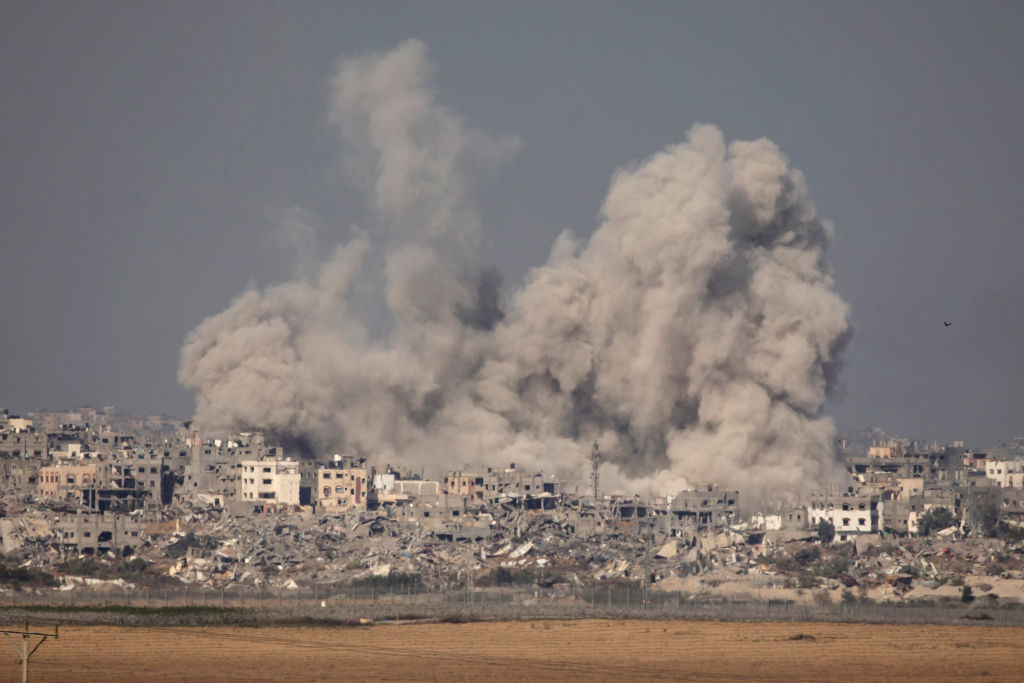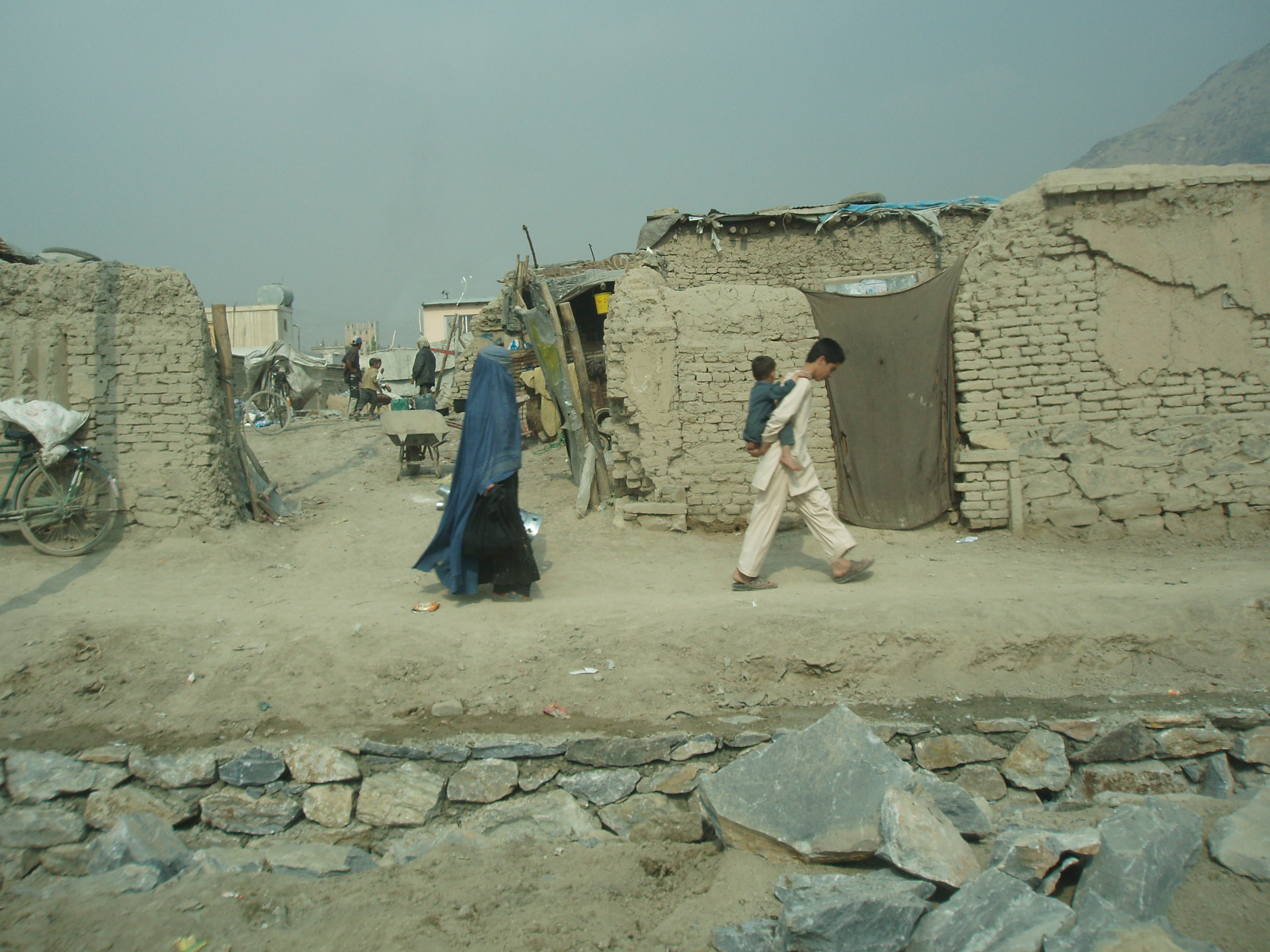BLM and Antifa are determined to bring the country to its knees. We should act accordingly.
No Refugees

Let Iran, Qatar, Russia, and China deal with the problem they created.
Canada recently announced that it would issue temporary visas for Gazans with Canadian relatives.
The Gazans certainly have to be housed somewhere. Today, according to the Wall Street Journal, “nearly 70% of Gaza’s 439,000 homes and about half of its buildings have been damaged or destroyed.” Its infrastructure will take up to ten years to rebuild. In the meantime, two million people cannot be expected to live in shacks or tents, especially considering the media’s fixation on the plight of Palestinian refugees. Even Palestinian-American commentator Richard Hanania proposed resettling Gazans in the West.
It shouldn’t surprise anyone that the Anglosphere is shouldering the burden—for all the crocodile tears Islamists cry about Palestinians, no Arab nation has stepped up to offer asylum. Egypt not only refused to allow Gazans on its land and rejected Israel’s offer to buy out its foreign debt in exchange for opening the border, but is now building a concrete wall—in addition to an already existent smaller one—to keep out their Arab brothers. In the mid-twentieth century, after they attempted to overthrow the Hashemite monarchy in Jordan, ignited civil war in Lebanon, and supported Saddam Hussein’s invasion of Kuwait, the Arab nations came to regard Palestinians as trouble. Hundreds of thousands were expelled from each country.
Canada, like the U.S., is not known for carefully selecting liberally-minded prospective citizens. A few months ago, an immigrant Canadian, Yaroslav Hunka, received two standing ovations at the Canadian House of Commons. Prime Minister Justin Trudeau and the visiting Ukrainian President Volodymyr Zelensky enthusiastically participated in the reception. It turned out that Hunka, who was introduced to the assembly as “a Ukrainian Canadian war veteran from the Second World War who fought for Ukrainian independence against the Russians,” was in fact a Waffen-SS member whose unit was implicated in the slaughter of Polish civilians. Both the Russian and Polish governments want the 98-year-old expedited to be tried for crimes against humanity.
Following World War II, Canada, Great Britain, and the United States resettled many Nazis and associates. In Operation Paperclip, the United States imported 16,000 German engineers and scientists, some of whom had served in positions of leadership under Hitler. Many, such as Wernher von Braun, later worked in the American aerospace program.
Thousands more Germans were waved through by immigration authorities who, though fully aware of their wartime allegiances, viewed these émigrés as Cold War intelligence assets. Nazi-hunting dates to the seventies when Jewish activists realized that former war criminals were living in the comforts of capitalism.
Though most Nazis who fled to the West never personally faced justice, they didn’t present an ongoing threat to the cause of democracy. Their cause had been thoroughly defeated. The likelihood of Americans in the late forties having to face the Wehrmacht on the battlefield again was nonexistent. Once the war ended, we dusted up our enemy’s remains and reoriented to confront the USSR. Yet when Hunka raised his hands triumphantly before the House of Commons, he probably thought “I won! I lived long enough to see my cause and my deeds redeemed!”
Diversity through mass immigration presents major social challenges. If putting Poles and Italians into one neighborhood eventually worked out, the absence of the ethic of assimilation pits one minority against another. For instance, at a rally in Thousand Oaks, California, Hamas sympathizer and community college instructor Loay Alnaji struck a Jewish counter-protester, 69-year-old Paul Kessler, with a bullhorn, causing Kessler’s death. On the other end of the country in Manhattan, Jewish students were barricaded in the Cooper Union library for 20 minutes while pro-Palestinian demonstrators pounded on the doors and windows.
Antisemitic incidents on American campuses have been the norm for decades; over a third of Jewish students hide their identity. In the age of diversity, equity, and inclusion, antisemitic incidents keep rising. We don’t know every single perpetrator, but many violent outbursts today appear to be part of a global intifada perpetrated by the foreign-born.
The North American branch of the global intifada is not limited to antisemitism. The rallies target other ethnic minorities, like Iranians and Indians. With Christian holidays like Christmas picked for disruption, even the American majority is coming under attack.
These demonstrations present a danger to all—for one, our cops containing riots are injured. Moreover, pro-Palestinian activists have expanded on the Antifa-BLM tactic of blocking roads. While our homegrown warlords block freeways, iconic places like the Bay Bridge, and events like Burning Man, Hamas sympathizers aim higher—they block access to airports. I previously discussed the significance of insurgents controlling the roads in the context of self-professed non-violent leftists. The attempt by terrorist sympathizers to control airports represents an escalation and should never be tolerated.
Gazans are notoriously antisemitic. The Israeli-French tattoo artist Mia Schem was seized by Hamas and held hostage by a civilian family in Gaza. In a recent interview, she recalled being tortured and said the kidnappers put her through a personal “Holocaust.”
According to a December 2023 poll of Palestinians, the overwhelming majority approves of the Simchat Torah Massacre and supports Hamas. A Cygnal poll of Muslim Americans, a far more diverse group that includes Iranian refugees, are also fans of the terrorist group. A clear majority justifies the 10/7 attack, and nearly 40 percent approves of Hamas leader Ismail Haniyeh.
Assimilation does not appear to be working its charms on the Muslim community in North America. Why would it? Instead of assimilating, our universities radicalize students. And educated Muslims remain perfectly adept at retaining a Third-World mentality. Immigrant and first generation medical professionals in America are particularly adept at calling for exterminating Jews. All of this is happening as Islamism is advancing worldwide. Unlike Hunka in 1945, Muslim radicals feel emboldened. Unlike the German scientists, Islamic professionals are not that essential.
In the eyes of American law, terrorist sympathizers are no different from Nazi and Communist true believers; support of terrorism constitutes grounds for deportation of non-citizens. Those who lied about their hateful ideologies to immigration judges should be stripped of citizenship and deported—just like John Demjanjuk, who served as a guard at multiple concentration camps.
Jews lived in what is now the American Southwest before the arrival of English speakers in North America. A group of Sephardi refugees from South America landed in New Amsterdam in the middle of the seventeenth century. Haym Salomon financed the American Revolution. Levi Strauss created American national dress. George Gershwin fused classical and jazz. J. Robert Oppenheimer created the atomic bomb, allowing the United States to emerge as a superpower. Jews were instrumental in turning New York City and L.A. into financial, scientific, and cultural capitals. And now, more and more, you hear talk about Jews leaving these places.
Taking a chance on a hardcore antisemitic population blending into American cities doesn’t seem like a worthy challenge—neither for North American Jews nor North Americans generally. Our community organizations need to take a firm stand against admitting Gaza refugees while demanding the deportation of non-citizens, as well as those who obtained citizenship in violation of the law.
I can’t say that I’m interested in the question of who should provide refuge to Gazans. It’s only fair if Qatar, Iran, Russia, and China take care of their proxies after the ordeal they put them through. As long as the West doesn’t take a single refugee, I’m good.
The American Mind presents a range of perspectives. Views are writers’ own and do not necessarily represent those of The Claremont Institute.
The American Mind is a publication of the Claremont Institute, a non-profit 501(c)(3) organization, dedicated to restoring the principles of the American Founding to their rightful, preeminent authority in our national life. Interested in supporting our work? Gifts to the Claremont Institute are tax-deductible.
What America could learn from the E.U.’s migrant crisis.
The media's favorite pawns are invoked again.



